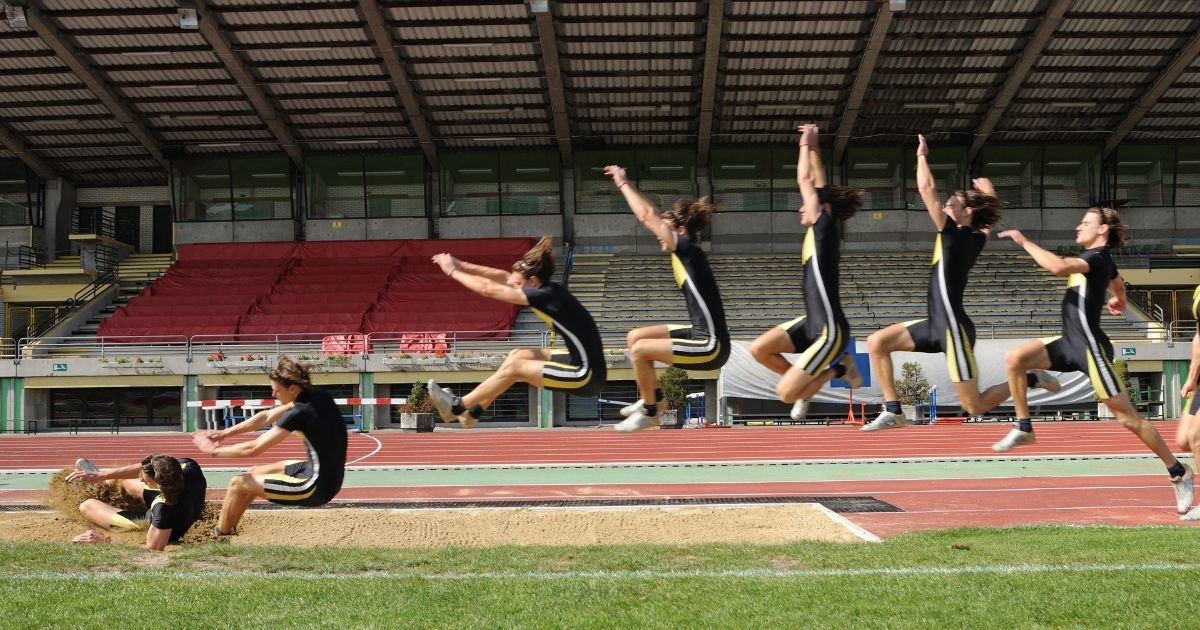Mastering the Art of Vertical Jump Training | Soaring to New Heights
If you’ve ever watched professional athletes or admired the impressive dunks of basketball players, you may have wondered how they can jump so high—the secret lies in their vertical jump training. The ability to leap to new heights is reserved for elite athletes and can be developed by anyone willing to put in the effort. In this blog post, we Mastering Vertical Jump will dive deep into vertical jump training, exploring the techniques, exercises, and strategies to help you master this art and soar to new heights.
Whether you want to improve your performance in sports, enhance your fitness level, or defy gravity, this comprehensive guide will provide you with everything you need to know to take your vertical jump to the next level. Enable your inner athlete and reach new heights with your vertical jump!
For Sale Product: Mastering Vertical Jump
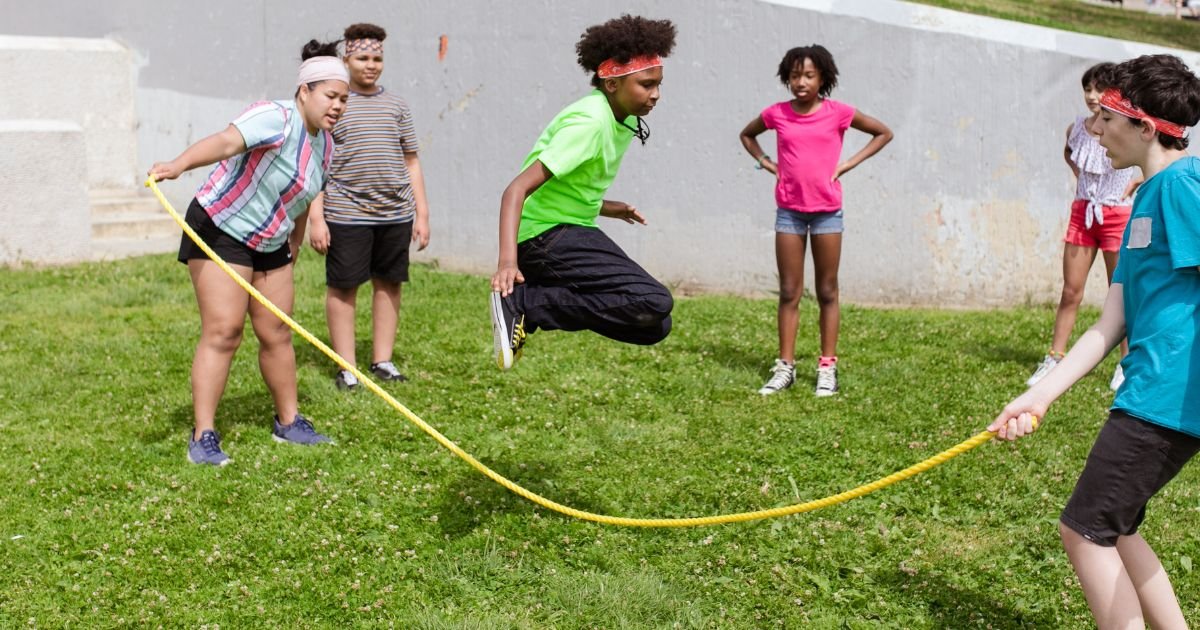
Understanding the science behind the vertical jump
Understanding the science behind vertical jump training is essential for anyone looking to improve their jumping ability. The vertical jump measures explosive power influenced by various factors, including muscle strength, muscle fiber type, and neuromuscular coordination. One key factor in vertical jump performance is lower body strength. Mastering Vertical Jump Building strong leg muscles, particularly the quadriceps, hamstrings, and calves, is crucial for generating the power to propel oneself off the ground. This can be achieved through squats, lunges, and calf raises, which target these muscle groups.
Another essential aspect to consider is muscle fiber type. There are two main types of muscle fibers: slow twitch (Type I) and fast twitch (Type II). Slow twitch fibers are more suited for endurance activities, while fast twitch fibers are responsible for explosive movements like jumping. Mastering Vertical Jump By incorporating exercises that target short twitch muscle fibers, such as plyometrics, and explosive movements like box jumps, athletes can train their bodies to generate more force quickly and efficiently.
Neuromuscular coordination is another crucial element in vertical jump training. It involves the communication between the nervous system and muscles, allowing for efficient recruitment and activation of muscle fibers during a jump. Plyometric exercises and sport-specific drills can improve neuromuscular coordination, enabling athletes to maximize their jump height.
Understanding the science behind vertical jump training provides valuable insights into the physiological Mastering Vertical Jump processes involved in achieving a higher jump. By targeting specific muscle groups, training the appropriate muscle fiber types, and improving neuromuscular coordination, individuals can unlock their full jumping potential and soar to new heights.
Read More: Everton vs. Arsenal
Essential exercises for vertical jump training
Incorporating the right exercises into your routine is crucial when mastering the art of vertical jump training. These exercises help strengthen your legs and core and improve your explosive power, enabling you to soar to new heights with Mastering Vertical Jump your vertical jump. Here are some essential activities you should include in your training regimen:
1. Squats are a staple in any vertical jump training program:
They target the muscles in your legs, particularly your quads, hamstrings, and glutes. Regularly performing squats can build lower body strength and power, directly translating into a higher vertical jump.
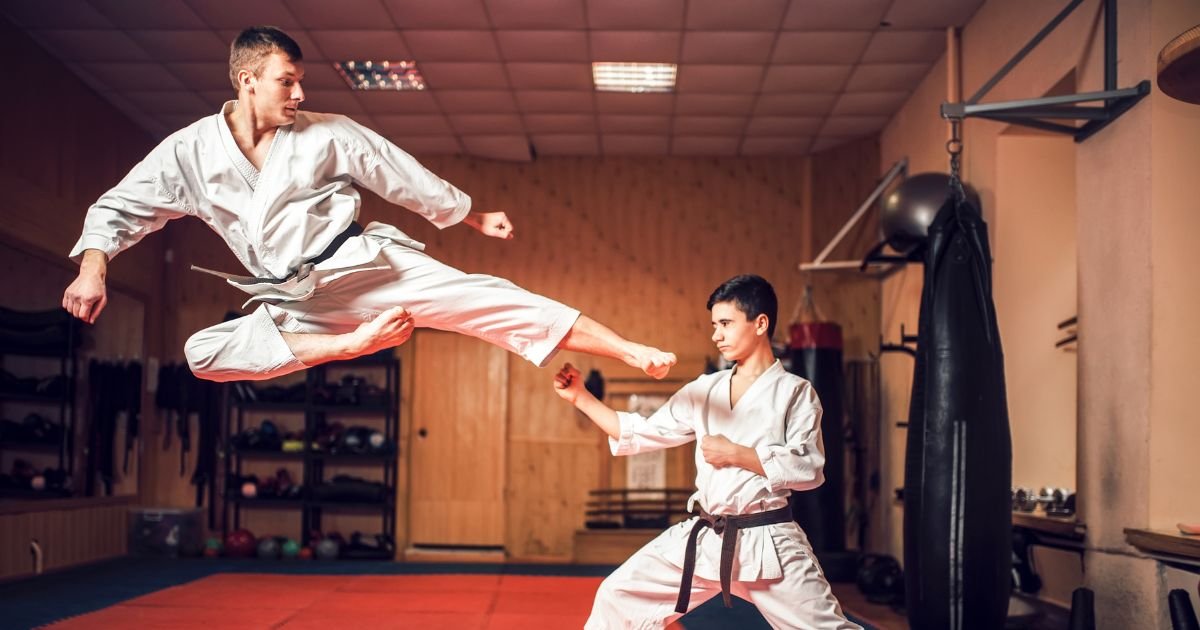
2. Plyometric exercises are explosive movements that focus on quick, decisive actions. Examples include box jumps, depth jumps, and lateral bounds. These exercises enhance your ability to generate force and improve your overall jump performance.
3. Calf raises: Strong calf muscles are essential for a powerful vertical jump. Incorporating calf raises into your training routine helps to strengthen your calf muscles, allowing for greater push-off power during takeoff.
4. Jump squats: Jump squats are excellent for developing explosive leg power. Start by performing a regular squat and then explode upward, jumping as high as possible. This exercise mimics the explosive movement required for a vertical jump and helps to improve your jump height.
5. Lunges: Lunges target multiple leg muscles, including glutes, quads, and hamstrings. They also improve overall balance and stability, which are crucial for an effective vertical jump.
6. Resistance band exercises: Resistance bands are versatile training tools that can add resistance to various leg exercises. Activities such as banded squats, banded lateral walks, and banded leg curls can help activate and strengthen the muscles needed for a powerful vertical jump. Remember, consistency is vital when it comes to vertical jump training. Mastering Vertical Jump Incorporate these essential exercises into your routine and gradually increase the intensity and difficulty as you progress. With dedication and perseverance, you’ll be well on your way to mastering the art of vertical jump training and soaring to new heights.
Developing explosive power and strength
Developing explosive power and strength is essential when mastering the art of vertical jump training. To soar to new heights, you must focus on specific exercises targeting the muscles involved in Mastering Vertical Jump explosive movements. The squat jump is one of the most effective exercises for developing explosive power. This exercise requires you to start squatting and then explode upwards into a jump, reaching as high as possible. Repeating this exercise will strengthen your leg muscles, particularly your quadriceps and glutes, which are crucial for generating power.
Another exercise that can help improve your vertical jump is the depth jump. This exercise involves stepping off a box or platform and immediately jumping when your feet touch the ground. This helps train your muscles to react quickly and produce force, allowing you to achieve higher jumps. Plyometric exercises, such as box jumps and bounding, are also practical for developing explosive power. These exercises involve quick, explosive movements that engage multiple muscle groups and mimic the motions required for a vertical jump.
Incorporating plyometric exercises into your training routine will help improve your overall power and explosiveness. In addition to these exercises, it’s important to incorporate strength training exercises that target the lower body, such as squats, lunges, and deadlifts. Building strength in your leg muscles will provide a solid foundation for generating power during your jumps.
Remember, consistency is critical when it comes to vertical jump training. Gradually increase the intensity and difficulty of your workouts over time to challenge your muscles and improve your jumping ability continually. With dedication and proper training, you’ll be well on your way to soaring to new heights with your vertical jumps.
Fine-tuning your technique and form
Once you have built a solid foundation of strength and power through your vertical jump training, it’s time to focus on fine-tuning your technique and form. This is where the real artistry of vertical jump training comes into play, as mastering the proper technique can significantly enhance your jump height. One crucial aspect of paying attention to is your takeoff position. Mastering Vertical Jump Start by positioning yourself in a quarter-squat stance with your feet shoulder-width apart and your knees slightly bent. Maintaining a strong and stable core throughout the movement is essential.
Extend your hips, knees, and ankles simultaneously as you explode upwards, generating maximum force and power. This triple extension will allow for a more explosive upward movement, propelling you higher into the air. Mastering Vertical Jump Another critical element to focus on is the arm swing. Your arms play a vital role in generating upward momentum during the jump.
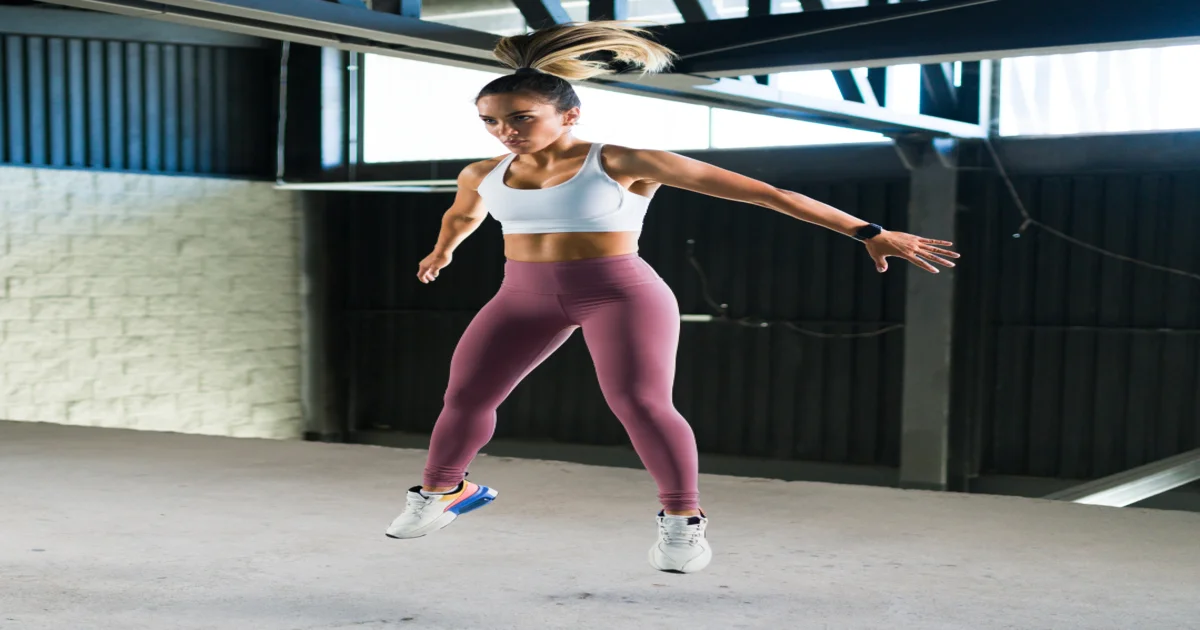
As you descend into the quarter-squat position, swing your arms down forcefully, and as you explode upwards, swing them up and forward, reaching for the sky. The coordination between your lower body and arm swing is crucial for optimal jump height. In addition to technique, proper body alignment is essential for maximizing your vertical jump.
Keep your eyes forward, chest out, and shoulders back throughout the hope jump. This alignment helps maintain proper posture, ensuring that all the force generated is directed upwards rather than wasted in other directions. Remember, forgets the importance of practicing your landings. A successful jump is not just about reaching great heights but also about safely returning to the ground. Practice landing softly and absorbing the impact with bent knees to protect your joints and prevent injury.
By honing your technique, perfecting your form, and paying attention to every detail of your jump, y truly unlock your potential and soar to new heights in your vertical jump training. Remember, practice makes perfect, so continue to refine your skills and push yourself to reach new limits with each jump.
Mastering Vertical Jump: A Comprehensive Guide from Plyometrics to Injury Prevention and Goal Setting
The ability to jump high is a skill that is highly valued in many sports, such as basketball, volleyball, and track and field. But mastering the vertical jump isn’t just about natural talent; it also requires training, technique, and a lot of hard work. In this comprehensive guide, we will cover everything you need to know to improve your vertical jump, from plyometric Mastering Vertical Jump exercises and strength training to injury prevention and goal setting. Whether you are a beginner or an experienced athlete, this guide will provide you with the tools and knowledge necessary to take your vertical jump to the next level. So, get ready to jump higher, faster, and stronger than ever before!
Introduction to Vertical Jump: Why it matters and what it can do for you
The ability to achieve an impressive vertical jump is not only a remarkable athletic feat but also a valuable skill that can greatly enhance your performance in various sports and physical activities. Whether you are a basketball player aiming to Mastering Vertical Jump dunk, a volleyball player striving for powerful spikes, or an athlete looking to improve overall explosiveness, mastering the vertical jump is a crucial aspect of athletic development.
But why does the vertical jump matter? The answer lies in the numerous benefits it can bring to your athletic performance. Firstly, a higher vertical jump allows you to reach greater heights, giving you a competitive advantage in sports that involve jumping or reaching for objects. This can make a significant difference in your ability to score points, block shots, or Mastering Vertical Jump make crucial plays.
Additionally, improving your vertical jump can enhance your overall power and explosiveness. Jumping requires a combination of strength, speed, and coordination, and by training and refining these aspects, you can generate more force and propel yourself higher off the ground. This translates to increased speed, agility, and quickness, enabling you to outmaneuver opponents, react faster, and perform at your best.
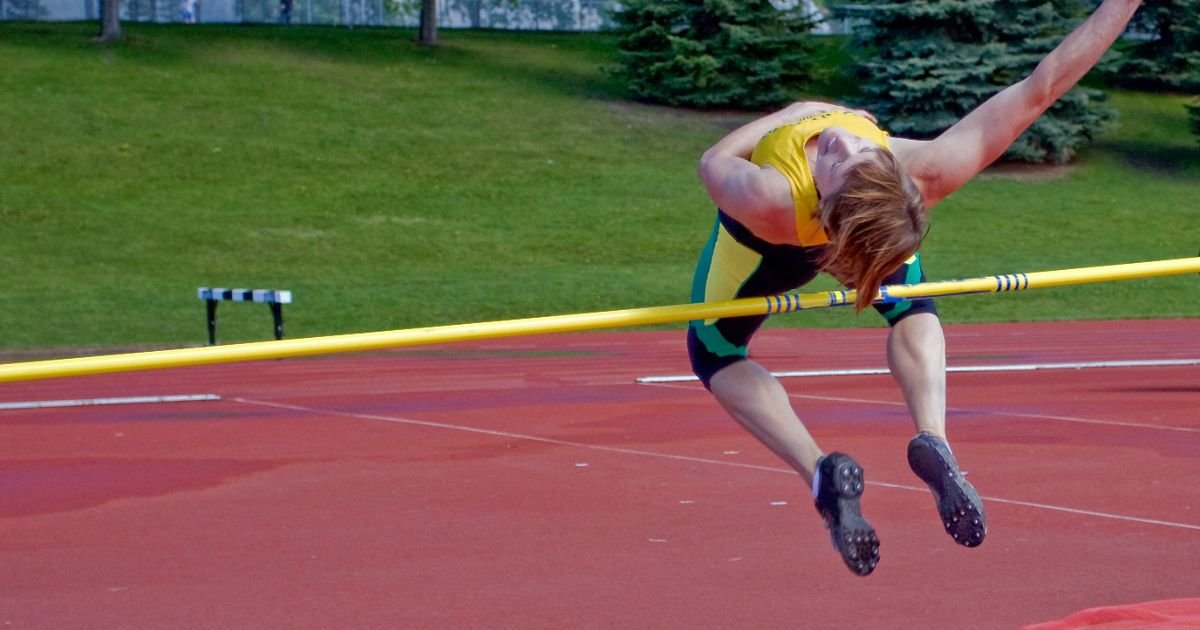
Moreover, mastering the vertical jump can have a positive impact on your overall athleticism and physical fitness. Jumping exercises, such as plyometrics, engage multiple muscle groups, including the legs, core, and upper body, leading to improved muscular strength, endurance, and coordination. These benefits extend beyond the realm of sports, as a strong and explosive lower body can also enhance daily activities such as running and climbing stairs and even reduce the risk of injury.
Setting goals and working towards improving your vertical jump also instills discipline, determination, and the mindset of continuous self-improvement. It challenges you to push your limits, overcome obstacles, and strive for personal growth. Mastering Vertical Jump By setting measurable goals and tracking your progress, you can stay motivated and focused on achieving new heights in your vertical jump.
In this comprehensive guide, we will delve into the world of vertical jump training, covering various aspects such as plyometrics, injury prevention strategies, goal setting, and more. Whether you are a beginner looking to take your Mastering Vertical Jump first leap or an experienced athlete aiming to reach new heights, this guide will equip you with the knowledge, techniques, and tips to master the art of the vertical jump. Get ready to soar and unlock your full athletic potential!
Understanding the Science behind Vertical Jump: How muscles and biomechanics play a role
Understanding the science behind vertical jump is crucial if you want to master this athletic skill. The ability to explode off the ground and soar into the air requires a combination of muscular strength, power, and proper biomechanics.
When you jump, your leg muscles, including the quadriceps, hamstrings, and calf muscles, work together to generate force and propel your body upwards. The quadriceps, situated on the front of your thigh, play a vital role in extending your knee joint and initiating the upward motion. The hamstrings, located on the back of your thigh, aid in knee flexion and hip extension, helping you achieve maximum power during takeoff takeoff. The calf muscles, including the gastrocnemius and soleus, provide the final push as they contract forcefully to extend the ankle joint.
Biomechanics, on the other hand, focuses on the efficient movement and alignment of the body during a vertical jump. Proper technique and body positioning can optimize the force production and transfer, resulting in a higher jump. For instance, maintaining a good posture with an upright torso and a slight forward lean can help utilize the Mastering Vertical Jump full power of your leg muscles. Additionally, coordinating the timing of your arm swing with the lower body movements can enhance the upward propulsion and provide additional momentum.
To further enhance your vertical jump, plyometric exercises can be incorporated into your training regimen. These explosive movements, such as box jumps, depth jumps, and squat jumps, aim to improve muscle power and quickness by utilizing the stretch-shortening cycle. This cycle involves rapidly stretching the muscles during the eccentric phase, followed by an immediate concentric contraction, resulting in increased force production.
While developing muscular strength and power is essential for a higher vertical jump, it is Mastering Vertical Jump equally important to prioritize injury prevention. Engaging in a well-rounded strength and conditioning program that includes exercises targeting the muscles involved in jumping, as well as stability and mobility training, can help reduce the risk of injuries such as sprains, strains, and imbalances.
Setting realistic and measurable goals is another crucial aspect of mastering the vertical jump. Whether you aim to increase your jump height by a certain number of inches or to achieve a specific vertical leap benchmark, having clear objectives can provide direction and motivation throughout your training journey.
In conclusion, understanding the science behind vertical jump involves comprehending the muscular contributions, Mastering Vertical Jump biomechanical principles, and the importance of proper training techniques. By incorporating plyometrics, focusing on injury prevention, and setting goals, you can work towards maximizing your vertical jump potential and becoming a more explosive athlete.
Plyometric Exercises for Vertical Jump: Exploring the most effective exercises and their benefits

When it comes to mastering your vertical jump, plyometric exercises play a crucial role in enhancing explosive power and improving overall jump height. Plyometrics, also known as jump training, involves quick and powerful movements that activate the stretch reflex in your muscles, leading to increased muscular power and elasticity.
There are several effective plyometric exercises specifically designed to target the muscles involved in vertical jumping. One of the most popular exercises is the depth jump, which involves stepping off a Mastering Vertical Jump box or platform and immediately jumping as high as possible upon landing. This exercise helps improve reactive strength and teaches your muscles to generate maximum force in a short amount of time.
Another effective plyometric exercise is the box jump. This exercise requires you to jump onto a sturdy box or platform from a standing position. Box jumps not only strengthen your leg muscles but also improve Mastering Vertical Jump coordination and balance, which are essential for a successful vertical jump.
The single-leg bounding exercise is also highly beneficial for vertical jump training. This exercise involves hopping forward on one leg while maintaining a controlled and explosive movement. Mastering Vertical Jump Single-leg bounding helps improve leg strength, stability, and power, ultimately contributing to a higher vertical jump.
Incorporating plyometric exercises into your training routine can yield significant benefits. These exercises not only improve muscle power and explosiveness but also enhance neuromuscular coordination and proprioception. Mastering Vertical Jump Furthermore, plyometrics can help increase the rate of force development, allowing you to generate more force in a shorter amount of time during takeoff.
However, it’s important to approach plyometric training with caution to prevent injuries. Start with lower-intensity exercises and gradually progress as your strength and technique improve. Always warm Mastering Vertical Jump up adequately before engaging in plyometric exercises and give your body sufficient time to recover between sessions.
Read More: Mastering Vertical Jump
Remember, mastering your vertical jump requires a comprehensive approach that includes proper technique, strength training, plyometrics, injury prevention strategies, and goal setting. By incorporating Mastering Vertical Jump effective plyometric exercises into your training regimen, you can take your vertical jump to new heights and achieve your athletic goals.
Strength Training for Vertical Jump: Incorporating weightlifting and resistance training
Strength training plays a crucial role in improving vertical jump performance. By incorporating weightlifting and resistance training exercises into your training routine, you can develop the necessary power and explosiveness needed to propel yourself higher off the ground.
Weightlifting exercises such as squats, deadlifts, and lunges are essential for building lower body strength and targeting the muscles involved in vertical jumping, including the quadriceps, hamstrings, glutes, and calves. These compound movements engage multiple muscle groups simultaneously, helping to enhance overall power and explosiveness.
In addition to weightlifting, incorporating resistance training exercises can further enhance your vertical jump. Exercises such as box jumps, depth jumps, and jump squats are specifically designed to mimic the explosive movements required for jumping. By using resistance bands or weighted vests, you can increase the intensity of these exercises, further challenging your muscles and improving your vertical jump.
It’s important to focus on proper form and technique when performing these exercises to maximize effectiveness and minimize the risk of injury. Start with lighter weights or resistance and gradually increase as your strength and technique improve. Working with a qualified trainer or coach can also help ensure that you are performing the exercises correctly and safely.

Remember to also include rest and recovery periods in your training routine. Building strength takes time, and giving your muscles time to repair and rebuild is essential for progress and injury prevention. Aim for a well-rounded training program that includes strength training, plyometrics, flexibility exercises, and adequate rest to optimize your vertical jump performance.
By incorporating weightlifting and resistance training exercises into your training regimen, you can strengthen Mastering Vertical Jump the muscles involved in vertical jumping, improve power and explosiveness, and ultimately take your vertical jump to new heights.
Speed and Agility Training for Vertical Jump: Enhancing explosive power and quickness
Speed and agility training are crucial components when it comes to enhancing your vertical jump. These training techniques focus on developing explosive power and quickness, both of which are essential for achieving maximum height and efficiency in your jumps.
Plyometric exercises, also known as jump training, are highly effective in improving your explosive power. These exercises involve rapid muscle contractions that generate maximum force in a short amount of time. Mastering Vertical Jump Examples of plyometric exercises include box jumps, depth jumps, and single-leg bounding. By incorporating these exercises into your training routine, you can significantly increase your ability to generate power and propel yourself higher during a jump.
In addition to plyometrics, incorporating speed and agility drills into your workouts can greatly enhance your overall performance. These drills are designed to improve your reaction time, change of direction, and overall coordination. Ladder drills, cone drills, and shuttle runs are commonly used to enhance speed and agility. By consistently practicing these drills, you can improve your footwork, reaction time, and body control, all of which are crucial for maximizing your vertical jump.
It’s important to note that while speed and agility training can be highly beneficial, it’s essential to prioritize proper form and technique to prevent injuries. It’s recommended to work with a qualified trainer or coach who can guide you through these exercises and ensure that you are executing them correctly.
Setting specific goals for your speed and agility training is also crucial for tracking progress and staying motivated. Whether it’s increasing your sprint speed, improving your agility in different directions, Mastering Vertical Jump or reducing your reaction time, establishing measurable goals can help you stay focused and driven throughout your training journey.
Remember, speed and agility training should be integrated into a well-rounded training program that Mastering Vertical Jump also includes strength training, flexibility exercises, and Mastering Vertical Jump adequate rest and recovery. By combining these elements, you can optimize your vertical jump performance and achieve your goals in a safe and effective manner.
Flexibility and Mobility: Importance of injury prevention and improving range of motion
Flexibility and mobility are crucial aspects of mastering the vertical jump. Not only do they play a significant role in injury prevention, but they also contribute to improving your range of motion, which directly impacts your jump performance.
When it comes to injury prevention, having good flexibility and mobility can reduce the risk of muscle strains, tears, and other injuries that can sideline you from training. By incorporating stretching exercises into your routine, you can enhance the flexibility of key muscle groups involved in vertical jumping, such as your hamstrings, hip flexors, and calves. This increased flexibility allows your muscles to move more freely and reduces the likelihood of overstretching or pulling a muscle during explosive movements.
Moreover, improving your range of motion through flexibility and mobility exercises can directly impact your vertical jump height. When your muscles and joints have a greater range of motion, you can generate more power and Mastering Vertical Jump explosive force during takeoff. This means that by enhancing your flexibility, you are maximizing your body’s potential to generate force and propel yourself higher off the ground.
To improve flexibility and mobility, incorporate dynamic stretching exercises into your warm-up routine. These exercises involve moving your body through a full range of motion, gradually increasing the intensity and Mastering Vertical Jump speed as you warm up. Static stretching exercises, where you hold a stretch for a prolonged period, are best performed after your workout to help relax and lengthen the muscles.
In addition to stretching, foam rolling and regular mobility exercises can help address any tightness or imbalances in your muscles and joints. Foam rolling, also known as self-myofascial release, targets trigger points and knots in your muscles, promoting better blood flow and mobility. Meanwhile, mobility exercises focus on improving the range of motion in specific joints, such as your ankles, hips, and shoulders, which are all involved in the vertical jump movement.
Remember, flexibility and mobility are not one-time achievements but ongoing processes. Consistency is key, so make sure to dedicate time to stretching, foam rolling, and mobility exercises regularly. By prioritizing injury prevention and improving your range of motion, you’ll lay a solid foundation for mastering the vertical jump and reaching new heights in your performance.

Nutrition for Vertical Jump: Fueling your body for optimal performance and recovery
When it comes to mastering your vertical jump, nutrition plays a crucial role in fueling your body for optimal performance and aiding in recovery. What you eat directly impacts your energy levels, muscle strength, and overall athletic ability. Whether you’re a professional athlete or a weekend warrior, paying attention to your nutrition can make a significant difference in your vertical jump training.
To maximize your vertical jump potential, focus on consuming a well-balanced diet that includes a variety of nutrient-rich foods. Aim for a combination of carbohydrates, proteins, and healthy fats to provide your body with the necessary Mastering Vertical Jump fuel and building blocks for muscle growth and repair.
Carbohydrates are your body’s primary source of energy. Opt for complex carbohydrates like whole grains, fruits, and vegetables, which provide a steady release of energy throughout your training sessions. These foods also Mastering Vertical Jump contain essential vitamins, minerals, and fiber that support overall health and performance.
Protein is essential for muscle repair and growth. Include lean sources of protein such as poultry, fish, eggs, legumes, and dairy products in your meals. Additionally, consider incorporating protein-rich snacks or shakes before and after your workouts to optimize muscle recovery.
Don’t forget about healthy fats, which are vital for hormone production and joint health. Include sources like avocados, nuts, seeds, and olive oil in your diet. These fats also help in reducing inflammation and supporting overall recovery.
Hydration is another crucial aspect of your nutrition plan. Proper hydration ensures optimal muscle function and helps prevent cramps and fatigue during training sessions. Aim to drink plenty of water throughout the day, especially before, during, and after your workouts.
Lastly, consider incorporating supplements into your routine if needed. Consult with a sports nutritionist or healthcare professional to determine if supplements like creatine, beta-alanine, or branched-chain amino acids (BCAAs) can support your vertical jump training goals.
Remember, nutrition is not just about what you eat before and after training. It’s a lifestyle that should be maintained consistently. Prioritize whole, nutrient-dense foods, and listen to your body’s needs. By fueling yourself properly, you’ll Mastering Vertical Jump optimize your vertical jump performance, enhance your recovery, and reach new heights in your training journey.
Rest and Recovery: The importance of rest, sleep, and active recovery in maximizing vertical jump gains

Rest and recovery are often overlooked aspects of training, but they play a crucial role in maximizing vertical jump gains. When it comes to improving your vertical jump, it’s easy to get caught up in the mindset of constantly pushing yourself to the limit. However, neglecting rest and recovery can actually hinder your progress and increase the risk of injury.
Rest days are essential for allowing your muscles and joints to recover from the intense stress of training. During exercise, your muscles undergo tiny tears, and it is during the recovery phase that they repair and grow stronger. Without adequate rest, these tears can accumulate, leading to overuse injuries and decreased performance.
In addition to rest days, quality sleep is paramount for optimal recovery. During sleep, your body Mastering Vertical Jump releases growth hormone, which is essential for muscle repair and development. Aim for 7-9 hours of uninterrupted sleep each night to allow your body to fully recharge and support your vertical jump training.
Active recovery is another important component of maximizing gains and preventing injuries. Rather than simply sitting on the couch on your rest days, engaging in light activities such as stretching, foam rolling, or low-intensity Mastering Vertical Jump cardio can help enhance blood flow, reduce muscle soreness, and promote faster recovery. Active recovery also aids in flushing out metabolic waste products that can accumulate in your muscles during intense training sessions.
Furthermore, incorporating rest and recovery strategies into your training program can help prevent overtraining, which can lead to decreased performance, fatigue, and increased injury risk. By allowing your body to properly Mastering Vertical Jump recover, you’ll be able to train at your highest level consistently and make steady progress towards achieving your vertical jump goals.
Remember, rest and recovery are not signs of weakness or laziness but rather crucial components of a well-rounded training program. So, make sure to prioritize rest, quality sleep, and active recovery to optimize your vertical Mastering Vertical Jump jump gains and keep yourself injury-free.
Goal Setting and Tracking Progress: Establishing realistic goals and measuring improvement
Setting clear and achievable goals is crucial when it comes to mastering your vertical jump. Whether you’re an athlete looking to enhance your performance on the basketball court or a fitness enthusiast aiming to improve your overall athleticism, having well-defined goals will provide you with a sense of direction and motivation throughout your journey.
When setting your goals, it’s important to strike a balance between ambition and realism. While it’s great to aim high and push yourself to new heights, setting unrealistic goals can lead to frustration and disappointment. Consider factors such as your current vertical jump, your fitness level, and the time and effort you can dedicate to training. This will help you establish goals that are challenging yet attainable.
Measuring and tracking your progress is equally important. Without proper monitoring, it can be difficult to determine whether you’re making strides towards your goal or if adjustments need to be made to your training regimen. There are various ways you can track your progress, depending on your preferences and resources.
One method is to keep a training journal or log. This allows you to record your workouts, including the exercises performed, repetitions, sets, and any additional notes or observations. By consistently tracking your training sessions, you can easily review your progress over time, identify patterns, and make necessary adjustments to optimize your training routine.

Another effective way to measure improvement is through regular performance testing. This can involve conducting standardized tests, such as the vertical jump test, at regular intervals. By comparing your results from previous tests, you can gauge your progress and identify areas that need further attention. Additionally, tracking other relevant metrics like speed, agility, and strength can provide a more comprehensive picture of your overall athletic development.
It’s important to remember that progress may not always be linear. There will be ups and downs Mastering Vertical Jump along the way, and it’s crucial to stay patient and persistent. Celebrate small victories and use setbacks as learning opportunities to refine your approach.
In summary, goal setting and tracking progress are vital components of mastering your vertical jump. Mastering Vertical Jump By establishing realistic goals and consistently measuring your improvement, you’ll be able to stay motivated, make necessary adjustments, and ultimately achieve the vertical jump you desire.
Injury Prevention: Recognizing common injuries and implementing strategies to minimize risk
When it comes to mastering your vertical jump, injury prevention should be a top priority. Jumping and explosive movements can put a tremendous amount of stress on your muscles and joints, making you more susceptible to Mastering Vertical Jump injuries if proper precautions are not taken.
One of the most common injuries in vertical jump training is jumper’s knee, also known as patellar tendonitis. This is an overuse injury that occurs when the patellar tendon, which connects the kneecap to the shin bone, Mastering Vertical Jump becomes inflamed. It can cause pain, swelling, and tenderness in the knee, making it difficult to continue with your training.
Another common injury is ankle sprains. When landing from a jump, the ankle can twist or roll, Mastering Vertical Jump leading to sprains or even ligament tears. This can be extremely painful and may require significant time for recovery.
To minimize the risk of these injuries, it is crucial to implement certain strategies. First and foremost, always warm up properly before engaging in any vertical jump training. This should include dynamic stretching and mobility exercises to prepare your muscles and joints for the intense movements ahead.
Next, make sure to wear appropriate footwear with proper ankle support. This will help stabilize your feet and ankles, reducing the chances of sprains or twists.
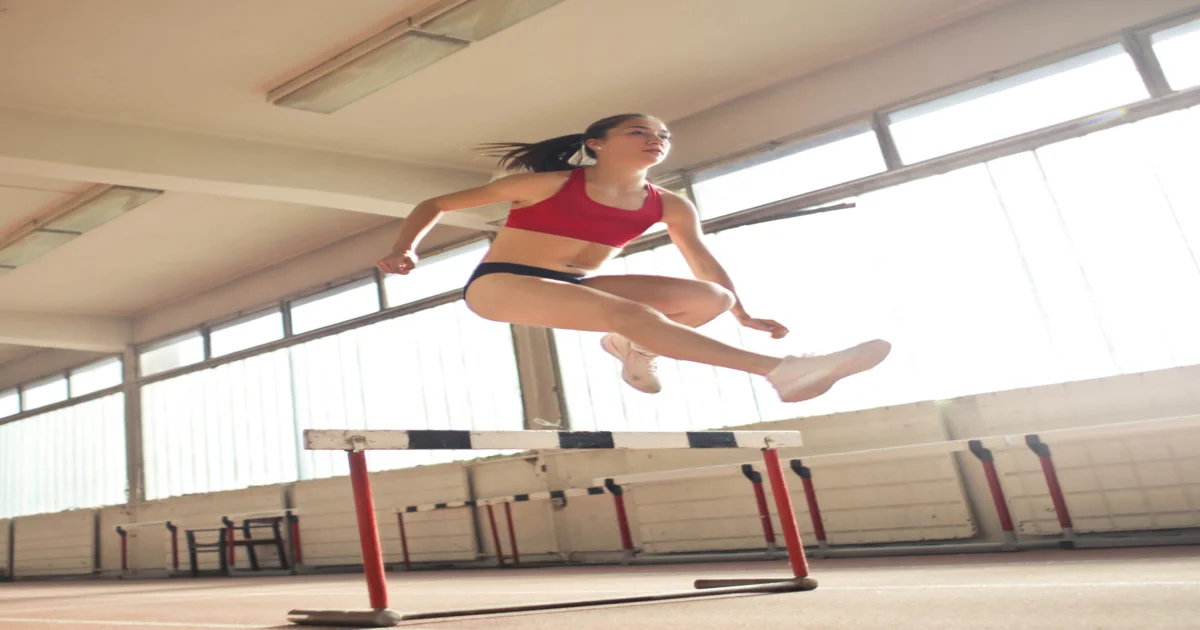
Additionally, incorporating strength and conditioning exercises into your training routine can help build the strength and stability needed to prevent injuries. Exercises that target the muscles around the knees and ankles, such as squats, lunges, and calf raises, can be particularly beneficial.
Furthermore, listen to your body and avoid overtraining. Pushing yourself too hard without allowing for proper rest and recovery can increase the risk of injuries. Be mindful of any pain or discomfort and take the necessary steps to address it before it becomes a more significant issue.
Lastly, consider working with a qualified coach or trainer who can guide you through proper technique and form. They will be able to assess your movements, correct any imbalances, and provide valuable insights to minimize the risk of injuries.
Remember, injury prevention should be a priority throughout your vertical jump training journey. Mastering Vertical Jump By recognizing common injuries and implementing strategies to Mastering Vertical Jump minimize risk, you can stay in the game and continue making progress toward your goals safely and effectively.
Tips and Techniques for Maximizing Vertical Jump: Expert advice and additional resources
When it comes to maximizing your vertical jump, there are plenty of tips and techniques that can help take your performance to the next level. To provide you with expert advice and additional resources, we have compiled some valuable insights from Mastering Vertical Jump top athletes and trainers in the field.
1. Plyometrics: Plyometric exercises are designed to enhance explosive power and improve your jump height. Incorporate exercises like box jumps, depth jumps, and squat jumps into your training routine to develop lower body strength and explosiveness.
2. Strength Training: Building overall strength is crucial for maximizing your vertical jump. Focus on exercises that target your leg muscles, such as squats, lunges, and deadlifts. Additionally, don’t forget to include core exercises to improve stability and control.
3. Proper Technique: Pay attention to your jumping technique to optimize your vertical leap. Work on your takeoff by utilizing a quick and forceful arm swing, extending your hips and knees, and driving through your toes. Remember to land softly and absorb the impact to prevent injuries.
4. Flexibility and Mobility: Maintaining good flexibility and mobility is essential to achieve an optimal vertical jump. Incorporate dynamic stretching exercises, such as leg swings and hip mobility drills, into your warm-up routine to improve your range of motion.
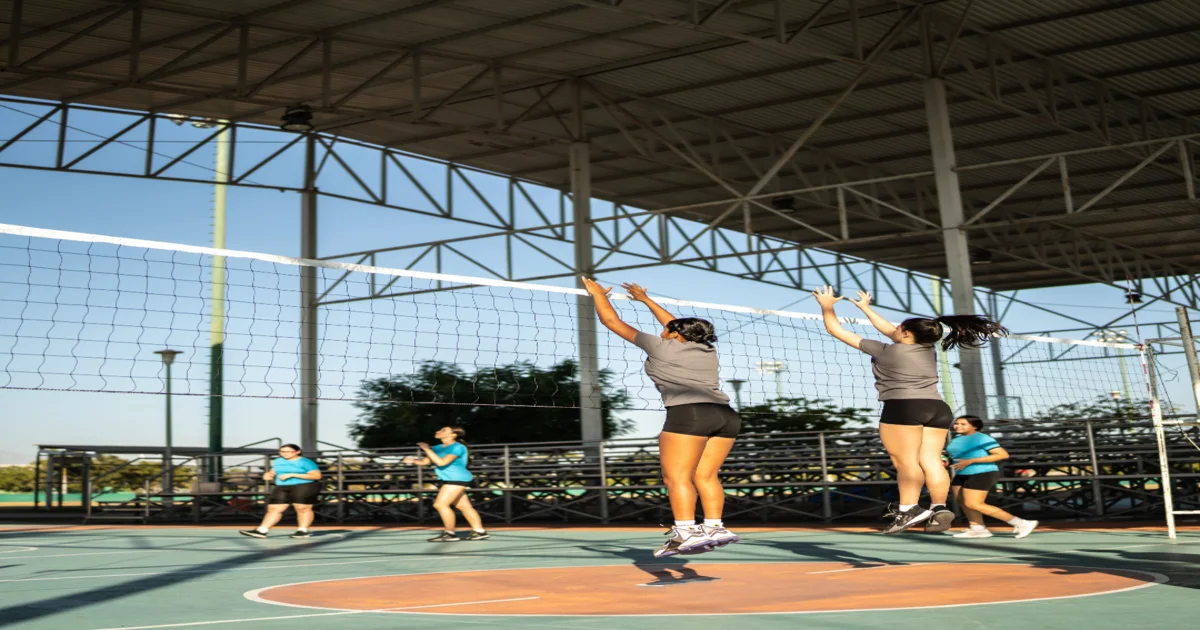
5. Goal Setting: Set realistic goals for yourself and track your progress. Whether it’s increasing your vertical jump by a certain number of inches or reaching a specific vertical jump height, having clear objectives can keep you motivated and focused on your training.
Read More: Vertical Jump Guide
For further guidance and detailed instructions, there are various resources available. Online videos, training programs, Mastering Vertical Jump and books specifically tailored to vertical jump enhancement can provide you with comprehensive workouts, tips, and techniques to elevate your performance.
Remember, mastering your vertical jump takes time, Mastering Vertical Jump consistency, and dedication. By incorporating these expert tips and utilizing additional resources, you’ll be well on your way to achieving your vertical jump goals and taking your Mastering Vertical Jump athletic abilities to new heights.
Conclusion: Taking your vertical jump to new heights and achieving your athletic goals
In conclusion, mastering your vertical jump is a journey that requires dedication, persistence, and a Mastering Vertical Jump comprehensive approach. By incorporating plyometric exercises, focusing on injury prevention, and setting clear goals, you can take your vertical jump to new heights and achieve your athletic goals.
Plyometrics provides a solid foundation for improving your explosive power and overall jump ability. Mastering Vertical Jump By incorporating exercises such as box jumps, depth jumps, and bounding drills into your training routine, you can enhance your strength, speed, and coordination. Remember to start with proper form and gradually increase the intensity and difficulty of the exercises to avoid overexertion and minimize the risk of injury.
Equally important is the emphasis on injury prevention. Strengthening your core, improving flexibility, Mastering Vertical Jump and maintaining proper biomechanics will not only enhance your performance but also reduce the likelihood of injuries. Incorporate exercises such as planks, lunges, and stretching routines into your training regimen to Mastering Vertical Jump maintain a balanced and injury-free body.
Setting clear and specific goals is crucial in driving your progress and keeping you motivated. Mastering Vertical Jump Whether it’s improving your vertical jump by a certain number of inches, reaching a specific height, or outperforming your previous personal record, having tangible targets will help you stay focused and track your progress along the way. Break down your goals into smaller milestones and celebrate your achievements, no matter how small they may seem.
Remember, mastering your vertical jump is not an overnight process. It requires consistent effort, patience, and the willingness to push your limits. Stay committed to your training, listen to your body, and seek guidance from professionals when needed. With the right mindset and a comprehensive approach, you can soar to new Mastering Vertical Jump heights and achieve your athletic goals. Keep striving, never give up, and enjoy the journey towards becoming the best version of yourself on and off the court.

We hope you found our comprehensive guide on mastering the vertical jump helpful and informative. Whether you’re an athlete looking to improve your performance on the court or an individual wanting to enhance your overall Mastering Vertical Jump fitness level, mastering the vertical jump is a crucial skill. By incorporating plyometric exercises, focusing on Mastering Vertical Jump injury prevention techniques, and setting realistic goals, you can make significant progress in your vertical leap. Remember to be patient and consistent in your training, and the results will come. Mastering Vertical Jump So get out there, put in the work, and soar to new heights!
